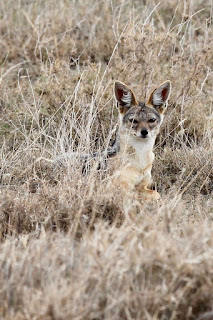We signed up for the Classic Tanzania Tour offered by Lion World Travel starting on June 3 to June 11, 2017. Our friends Sue and Matt Roth went to the same tour, same schedule in 2016. They loved the trip and highly recommended it to us. The itinerary covers the visiting of Tarangire National Park, Serengeti National Park, and Ngorongoro Crater. It was a solid 5 days of game drives along with some traveling time. We were able to see the beauty of Tanzania’s national parks, a lot of animals, and the Great Migration activities. It was a life time memorable trip and we appreciated very much for Sue and Matt’s recommendation.
The itinerary was as follows,
June 3, 2017 - traveled from DC’s Dulles Airport to Addis Ababa, Ethiopia
June 4, 2017 - transferred from Addis Ababa to Kilimanjaro Airport of Tanzania, then traveled to Arusha for overnight stay at Lake Duluti Serena Lodge
June 5, 2017 - drove thru Arusha to Tarangire National Park, checked into Tarangire Sopa Lodge, and game drive in the afternoon
June 6, 2017 - morning game drive in Tarangire National Park, drove to Serengeti National Park, and checked into Serengeti Serena Lodge
June 7, 2017 - full day game drive in Serengeti National Park
June 8, 2017 - morning and afternoon game drives in Serengeti National Park
June 9, 2017 - morning game drive in Serengeti National Park, drove to Ngorongoro Crater, and checked into Ngorongoro Serena Lodge
June 10, 2017 - full day game drive in Ngorongoro Crater
June 11, 2017 - drove to Arusha, and then Kilimanjaro Airport for return flights to the US
We learned on the day before we took off that we were the only two on this tour. It was due to the timing of early season and only 2 of us signed up for this tour. It served us great, just like a private tour on a 6-passengers safari Land Cruiser. We had a private tour guide with a lot of freedom of doing whatever we like. It was nice!




























































